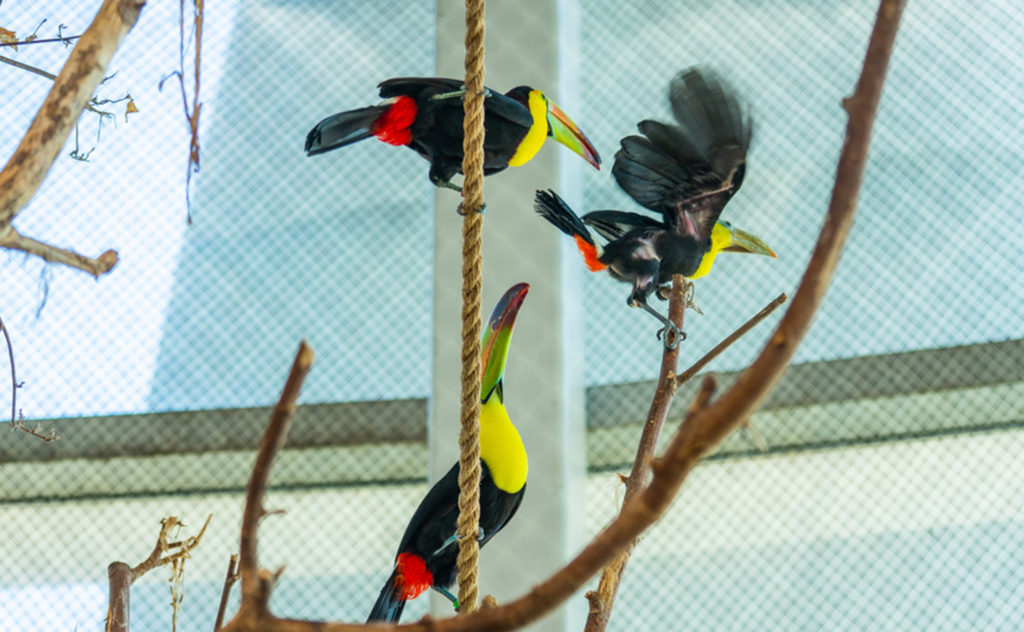Ramphastos sulfuratus
Fast Facts
- Also known as a Rainbow-billed Toucan
- Keel-billed toucans are the national bird of Belize
- Their frog-like call can be heard up to half a mile away
- They have a long thin tongue that looks like a feather
- By eating fruit and dropping the seeds, toucans help the rainforest grow


Range
Central America and northern South America

Habitat
Tropical and sub-troical rainforests

Size
18-20 inches long

Nutrition
Fruits, berries, insects, small vertebrates, and bird eggs
Characteristics
Keel-billed toucans have a vibrant green bill, splashed with orange, blue, and red coloration. The bill can grow to be over a third of the length of the bird’s body (it is smaller for females), and though it may look cumbersome, it is incredibly light-weight. Their body is covered in black feathers with a white rump and red undertail, with yellow on the face and breast. The skin around their eyes is green, and their legs are blue. Keel-billed toucans have zygodactyl toe orientation (two toes in front and two in back) to aid in climbing branches.
Behavior
Keel-billed toucans are crepuscular, which means they are most active in mornings and evenings. They sleep in hollow trees, sometimes with five or six adult toucans together in one sleeping spot. Toucans are generally social birds, living in flocks of up to 22 individuals. They rarely fly long distances due to their short and heavy wings. Instead, they hop from branch to branch. When feeding on items such as berries and insects, the bird will grasp the food with the tip of its bill, quickly flick it into the air, catch it, and then swallow it whole. Their large beak allows them to pick fruits or pluck eggs from basket nests, and is serrated to give them a better grip.
Reproduction
Keel-billed toucans are primarily monogamous. They nest in holes and nooks of trees with clutches of 1-4 eggs. The male and female toucans take turns incubating the batch for 16-20 days. Chicks typically leave the nest (known as ‘fledging’) around 42-47 days after hatching.

